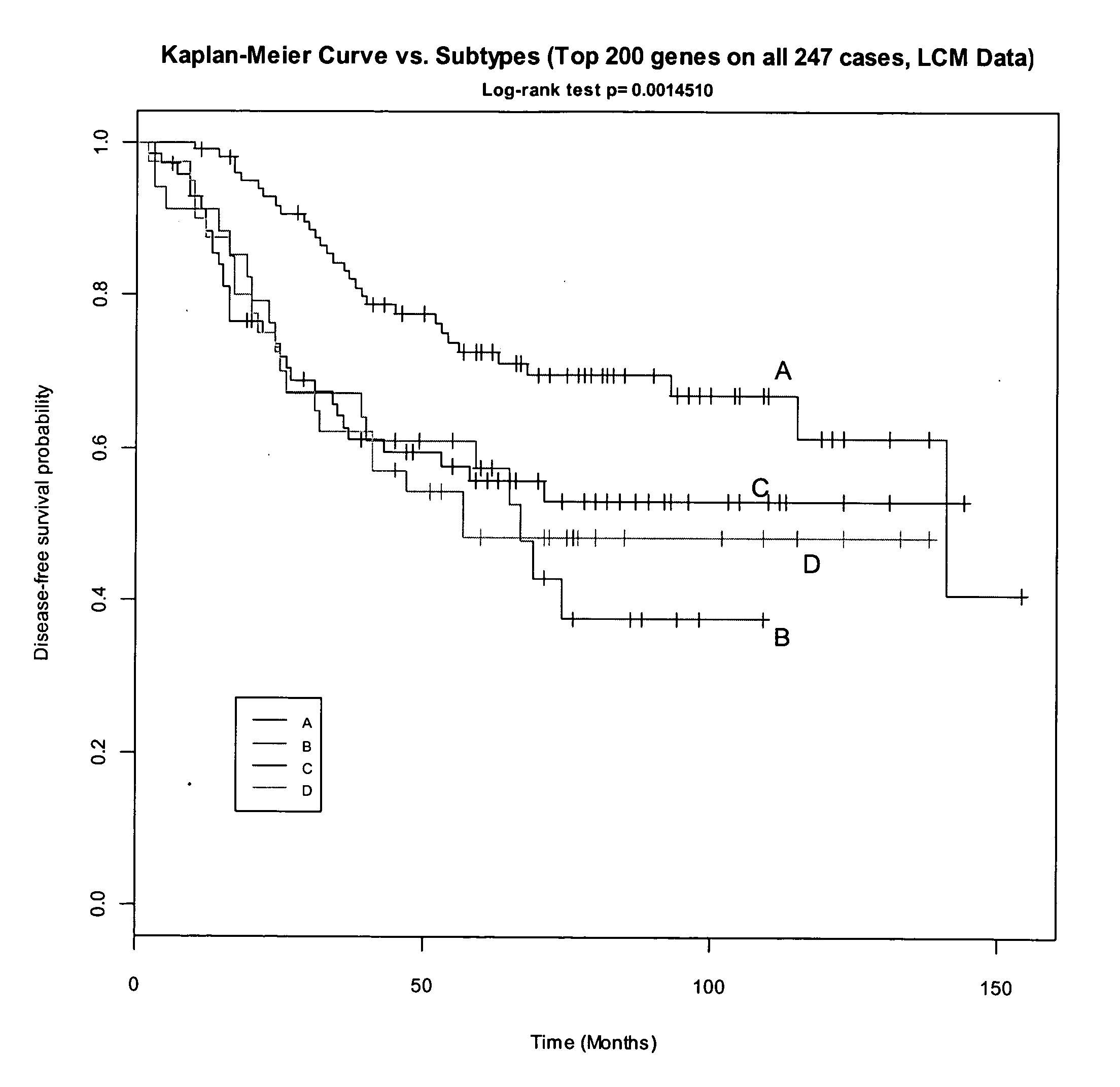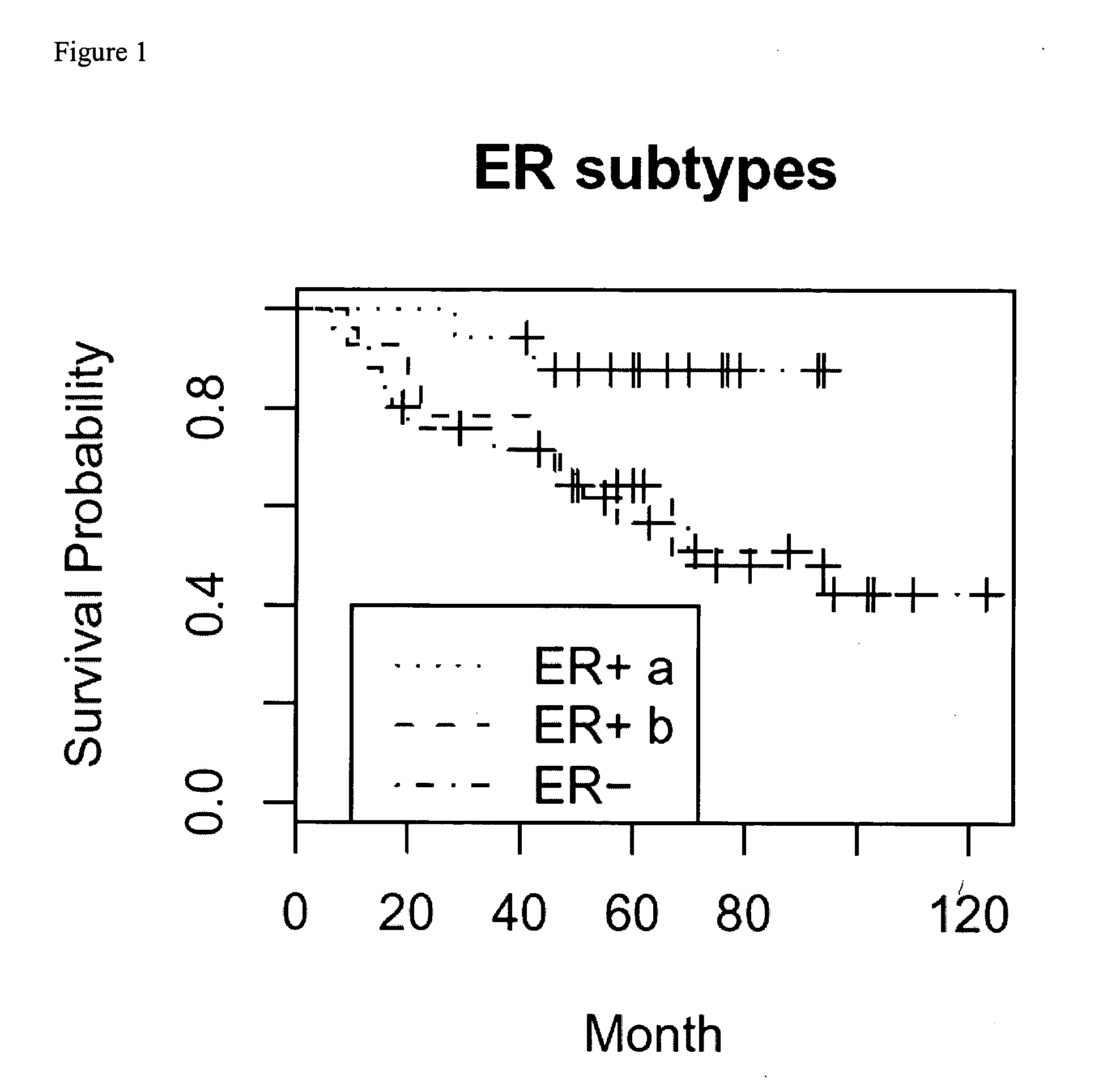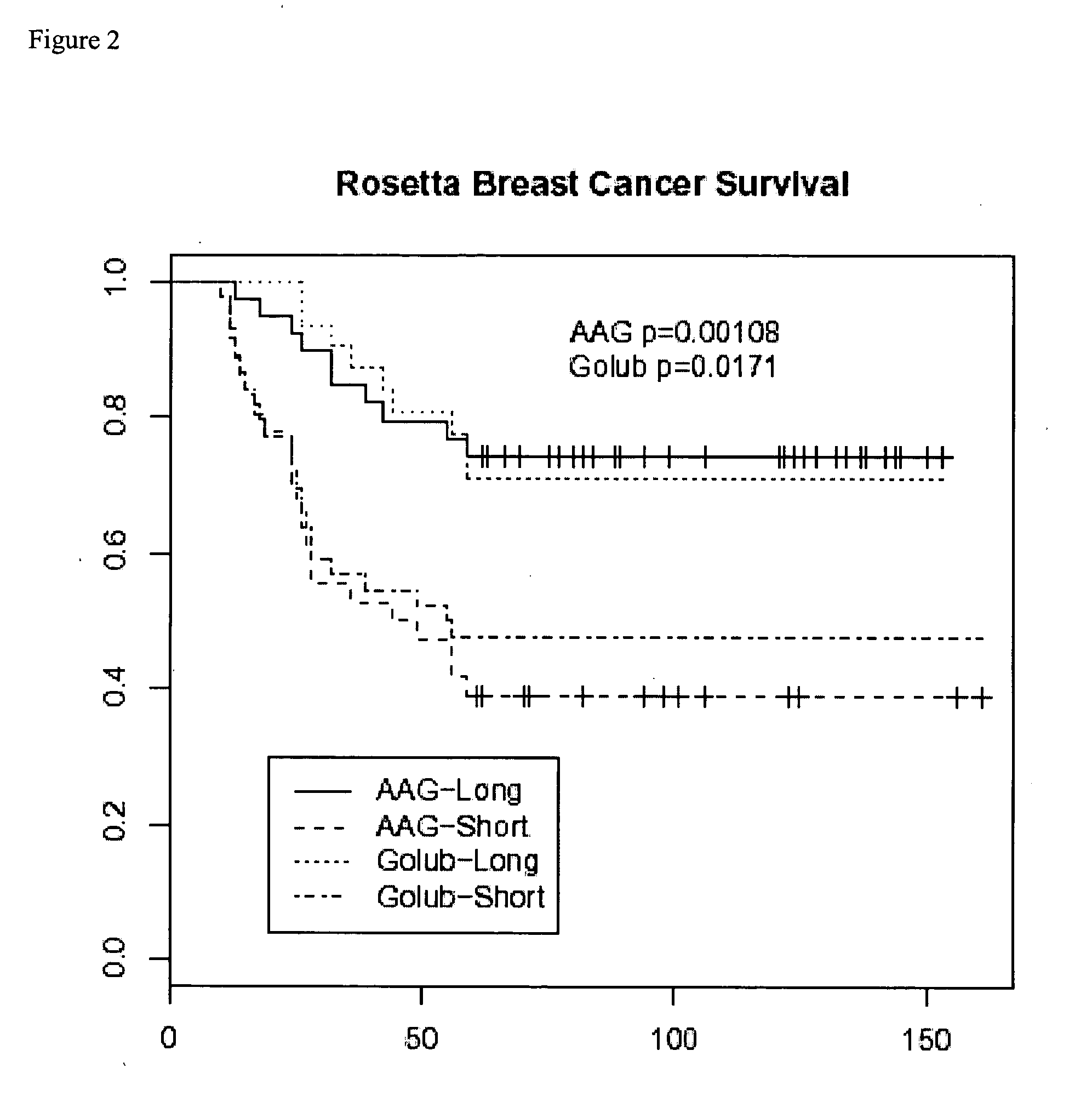Breast cancer signatures
a gene expression and signature technology, applied in the field of breast cancer signatures, can solve the problems of cancerous breast cancer, inclusion or exclusion of multiple genes, invasion and damage of nearby tissues and organs, etc., and achieve the effect of reducing comparisons
- Summary
- Abstract
- Description
- Claims
- Application Information
AI Technical Summary
Benefits of technology
Problems solved by technology
Method used
Image
Examples
specific embodiments
[0051] The present invention relates to the identification and use of gene expression patterns (or profiles or “signatures”) which discriminate between (or are correlated with) breast cancer survival outcomes in a subject. Such patterns may be determined by the methods of the invention by use of a number of reference cell or tissue samples, such as those reviewed by a pathologist of ordinary skill in the pathology of breast cancer, which reflect breast cancer cells as opposed to normal or other non-cancerous cells. Because the overall gene expression profile differs from person to person, cancer to cancer, and cancer cell to cancer cell, correlations between certain cells and overexpressed genes may be made as disclosed herein to identify genes that are capable of discriminating between breast cancer survival outcomes.
[0052] The present invention may be practiced with any number of the genes believed, or likely to be, differentially expressed with respect to breast cancer survival ...
example i
Materials and Methods
[0103] Clinical specimen collection and clinicopathological parameters. 86 patients were expression profiled, 57 of these had clinical follow-up, specifically overall survival. Biomarker status is shown below in Table 1 for all 86 patients
TABLE 1Age and biomarker status for the 86 patientssubsequently gene expression profiledAgeNo. of CasesPercentage1214%45-552428%>555058%Estrogen-receptor statuspositive4148%negative4552%Progesterone-receptor statuspositive3237%negative5463%Her2 / Neu statuspositive1619%intermediate2327%negative4554%
example ii
Identification of ER positive subtypes with different survival outcomes
[0104] Within the set of 86 patients from Example I, 41 had breast tumors that were ER+ via a biomarker test. Within this set of 41, microdissection was used to obtain breast cancer cells for identification of a molecular signature (i.e., expression of genes) that differentially categorized the ER+ group into two subgroups. This was done by (i) using unsupervised hierarchical clustering to identify two subtypes, followed by (ii) completing a t-test on every gene and (iii) extracting those genes whose differential expression was at an adjusted p <0.05 (using false discovery rate procedure).
[0105] 864 genes were extracted and are listed in Tables 2 and 3. Using clinical outcome (overall survival), it was determined that these two subtypes (identified as ERa and ERb, or ER positive subtypes a and b) divided the ER+ patients into two different survival curves as shown in FIG. 1. Genes which which positively correla...
PUM
| Property | Measurement | Unit |
|---|---|---|
| time | aaaaa | aaaaa |
| cell morphology | aaaaa | aaaaa |
| fluorescent in situ hybridization | aaaaa | aaaaa |
Abstract
Description
Claims
Application Information
 Login to View More
Login to View More - R&D
- Intellectual Property
- Life Sciences
- Materials
- Tech Scout
- Unparalleled Data Quality
- Higher Quality Content
- 60% Fewer Hallucinations
Browse by: Latest US Patents, China's latest patents, Technical Efficacy Thesaurus, Application Domain, Technology Topic, Popular Technical Reports.
© 2025 PatSnap. All rights reserved.Legal|Privacy policy|Modern Slavery Act Transparency Statement|Sitemap|About US| Contact US: help@patsnap.com



